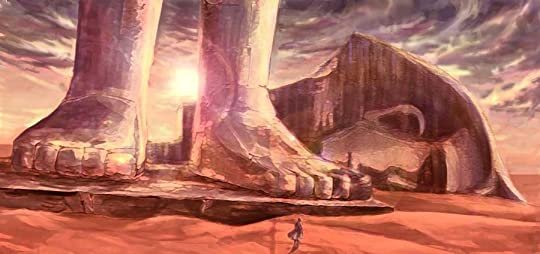My name is Ozymandias, King of Kings!
“I meet a traveler from an antique land who said: Two vast and trunkless legs of stone stand in the desert. Near them, on the sand, half sunk, a shattered visage lies, whose frown, and wrinkled lip, and sneer of cold command, tell that its sculptor well those passions read which yet survive, stamped on this lifeless things, the hand that mocked them and the heart that fed: And on the pedestal these words appear: ‘My name is Ozymandias, King of Kings: Look on my works, ye mighty, and despair!’ Nothing beside remains. Round the decay of that colossal wreck, boundless and brave the lone and level sand stretch far away.”
'Ozymandias' is a poem written by the English poet Percy Bysshe Shelley in 1818, and it quite popularized the name. However, not many know its true origin. Before being the character of a sonnet, Ozymandias was the title of the most well-known and influential Pharaoh who ever lived. Wh-wait-what? No, not Cleopatra. I'm talking about Ramesses II, the Elect of Ra, Keeper of Harmony, and Ruler of Rulers, also known as Ozymandias.
The poem was written roughly a year after the discovery of Ramesses' statue, which was a funeral ornament buried in the mud. Shelley wrote the poem for a challenge in his literacy circle and was inspired by the newly found artifact. The mysterious traveller depicted in the story is also a real-life person named Diodorus Siculus. He was a Greek historian who wrote a book covering many significant historical events, including Ramesses II's, who happened to be named Ozymandias, like in the poem.
For those who don't know much about Egypt's history and wonder why Ramesses II is such a big deal, well, he pretty much built some of the most iconic historical sites in Egypt like the Temple of Abu Simbel, Luxor and Karnak. Funnily enough, the earliest peace treaty ever recovered was written by him with the Hittite empire.
Apparently, his fame was as great as his legacy!
